- Learning time
- 30 minutes
- First play time
- 120 minutes
Votes for Women
Designed by: Tory Brown
Votes for Women relives the suffragette movement of the United States, from 1848 to 1920. Players can play as the suffragettes versus the opposition, or co-operatively against the game itself, where the opposition is controlled by a ‘bot’. We’ll describe the competitive version here.
The goal is to generate support for (or against) the suffragette movement, which is measured by cubes that are placed in the 48 states (Alaska and Hawaii don’t feature): purple and orange cubes show support for the suffragettes, whereas red cubes show opposition. It’s important to notes that states never have both present: if you’re instructed to add cubes, but there are opponent cubes present, you remove them instead (eg if I’m adding two cubes to Vermont but there’s an opposition cube already present, I remove their cube first and add a single cube of my own). This no-shared-spaces rule is important, because your presence on the board is crucial to success.
Over six turns, both sides will play six – sometimes more – cards from their bespoke decks in each turn. The cards can be played for four different effects: campaigning, organizing action, lobbying, and – most likely – the event, as described by the text on the card itself. Campaigning allows you to roll dice and add a matching number of cubes (or kick out opponent cubes, remember!) to regions where you have campaigners present. Campaigners do what they say on the tin, and you can move them from region to region before taking this action by paying buttons. Buttons can also be spent to reroll dice if you don’t like the result, so they’re handy to have. If you’re short of buttons, organizing action will get some into your hands from the supply – however many campaigners you have out on the board, that’s how many buttons you’ll get. Taking the event just means following the text on the cards, and they tend to be very effective; increasingly so as the game continues; getting swathes of support or debilitating progress for the other side. Note that some events are played onto the board for ongoing effects, and other events depend on them being in (or out) of play.
Finally, lobbying. The suffragettes are lobbying for the nineteenth amendment to be passed by congress, so it’s in their interest to make sure this happens by expending a card to roll x amount of dice (equal to however many active campaigners you have) and any 6 adds a congressional marker to the congressional track on the board. If turn six ends without the amendment being passed, the opposition wins, even if their support on the board at this point is abysmal. If the amendment is passed at any point during the game, then any time a player has four support cubes in a state, it immediately swings their way permanently, as tracked by the game’s enormous green ticks and red crosses. If a 13th cross appears on the map – rejecting the amendment – the suffragettes lose. If a 36th tick appears, they win. If neither condition has been met at the end of turn six, then the game goes to a final vote! This is something of a die-rolling lottery, but having a handy supply of buttons to pay for re-rolls doesn’t hurt.
The guru's verdict
-
Take That!
Take That!
Whilst the game's narrative is ideological and political, the vibe is combative, with interference and political agitation being key components
-
Fidget Factor!
Fidget Factor!
Pretty low, verging on moderate. The game is probably best as a head-to-head, as it allows both sides to hone in on plans and spend less time liaising- unless of course that's what you seek from a game that is very invested in its history.
-
Brain Burn!
Brain Burn!
Votes for Women seems to err towards the tactical, where play is fairly reactive, and each card represents a series of options. Events are often the most alluring actions - although the Suffragettes mustn't neglect lobbying - although campaigning at the right time can also be very productive.
-
Again Again!
Again Again!
While the broader brushstrokes aren't going to fluctuate wildly from visit to visit, there's plenty of variety in the cards, the asymmetric sides, and the tense finales to reward repeat visits.

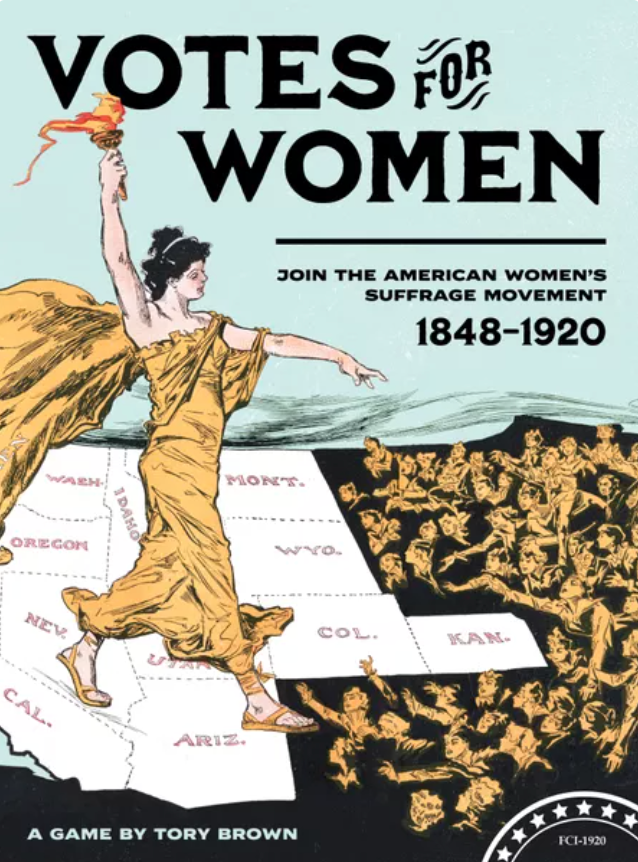
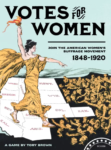
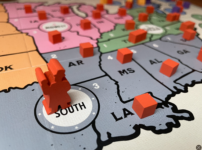
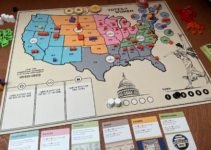
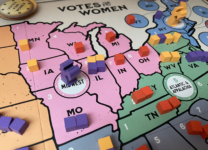
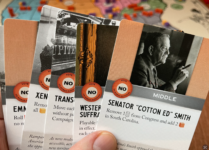
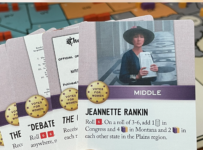






Sam says
Votes for Women doesn't rest on the laurels of its history, ideology, or plentiful designer notes and reprinted artifacts of the time that come in the box. It's also a solidly compelling game playing out across the board, reliving and hopefully retelling the very real fight for women of the time. Whilst the cards and cubes don't speak of violence, the game's flavour, to me, is reminiscent of such battles as 878 Vikings or - another historical meditation and reflection - Plains Indian Wars. All three have a reactive, tactical feel to them, where you can have strategies, but ignore the turn-by-turn board state at your peril. This has less of the blood-curdling Bacchic cries of frenzy, but the fight is no less real, and it's astonishing to think it was resolved only a century ago. As a game and an educational tool in one, Votes for Women succeeds dramatically on both counts.